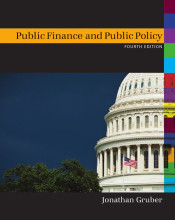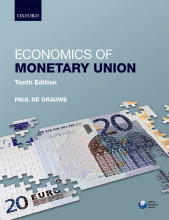Social Security
22 important questions on Social Security
What is social security?
How is the Dutch pension system build out of 3 pillars?
2. Occupational pensions
3. Individual pension plans
How is AOW financed?
From 2001: extra funds necessary, these are financed by tax revenues which are also paid by older people.
- Higher grades + faster learning
- Never study anything twice
- 100% sure, 100% understanding
The unfunded nature of AOW has important implications for the distribution of income across generations. It also redistributes income within generations. How?
2 BUT 'differential mortality!' rich people live longer. Therefore, rich people receive AOW benefits for a longer time
3 From unhealthy to healthy
4 By family structure
What is an annuity payment and a replacement rate?
Replacement rate: the ratio of benefits received to earnings prior to the entitling event
Using the 35 highest years reflect multiple concerns.
2 not too large a benefit for high earning years late in career
too short a window leads to abuse:
* bus driver working 25-hour shifts to maximize pension payment
* Brazilian public employees receiving promotions right before retirement
Pension systems can be funded or unfunded. Differentiate between them
Unfunded: Payments collected from today's workers go directly to today's retirees instead of being invested in order to pay future benefits.
Social Security is partially funded: Today's taxes fund some but not all of future benefits
What is Social Security Wealth (SSW)?
How is SSW calculated?
2 use a discount rate to calculate the NPV of those benefits
3 calculate the entire future stream of taxes that one expects to pay before he dies
4 compute the NPV of those taxes
5 Take the difference between these two to get SSW
Give some examples of how SSW varies within groups that are the same ages
2 married couples have more SSW than single people
3 single-earner couples have more SSW than two-earner couples
4 the gains to the poor relative to the rich from Social Security are overstated because the length of life rises with income
One justification for Social Security is the market failure in the annuties market. Explain this.
True reason for social security: paternalism
1 policy makers worry that people won't save enough
2 most workers have very little savings other than social security
Why might Social Security not smooth consumption?
What are the costs and benefits of working an additional year at age 62?
i pay an extra year of payroll taxes on earnings, receive one year less of Social Security benefits
Benefits: benefit adjustment
ii higher Social Security benefit level through the actuarial adjustment
What is the retirement hazard rate?
Gruber and Wise (1999) calculated the implicit tax from Social Security for a series of countries. Across countries, there is much variation. Name the difference between US and NL
NL: 91% in the Netherlands
> countries with higher taxes have less eldery LFP
Social Security faces a major fiscal imbalance as it is increasingly difficult for young generations to pay for the benefits of older generations. Name three (demographic) causes.
2 falling birth rates
3 reduction in wage growth rates
What was the Greenspan Commision its policy recommendation in 1983?
2 the government should accumulate savings in the Social Security trust fund so that, when the baby boomers retire, there would be enough money to pay their benefits
Name examples of Social Security reforms
2. extend the base of taxable wages
3. raise retirement age
4. lower benefits
5. reduce benefits for high income groups
How does social security differ from social insurance?
Why does Social Security crowd out effects differ across education level?
Low educated: no saving, because 1) no means and 2) financial illiteracy
What is implicit taxation
t = - SSAa / Wa+1 = missed benefits / wage earned by working one more year
In the Netherlands, there used to be very generous early retirement schemes. Motivated by creation of jobs for the young. Based on which two assumptions?
2 there is a fixed amount of work to be done in the economy lump of labour fallacy, quite unrealistic
The question on the page originate from the summary of the following study material:
- A unique study and practice tool
- Never study anything twice again
- Get the grades you hope for
- 100% sure, 100% understanding
































